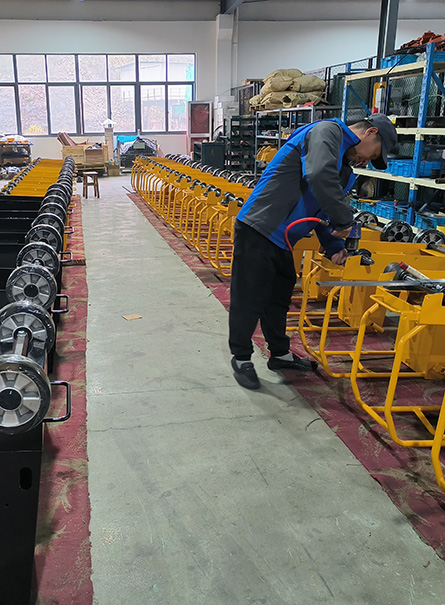What is a Vibratory Roller?
A vibratory roller is a specialized compactor type, designed to enhance the load-bearing capacity of various surfaces by combining static and dynamic forces. It is characterized by its drum that not only densifies materials like soil and asphalt but also imparts vibrations to the surface for effective compaction. The wheels of the vibratory rollers are designed to comprehensively cover the area beneath them, making this type of roller notably efficient in compaction tasks. It typically features two wheels at the rear and a drum roller at the front.
How a Vibratory Roller Works
Mechanism of Action:The vibratory roller is engineered to produce vibrations crucial for compaction. It achieves this through a drum filled with basalt. As the drum spins, the basalt's motion against the drum walls generates these vibrations. Enhancing the basalt's weight can amplify the vibration intensity. Additionally, vibrations can be generated using weights attached to the shaft within the motor, located inside the drum. This design allows the roller to adeptly navigate and function on uneven terrain, thanks to its capacity for vertical movements.
Operating Procedures for a Vibratory Roller
- Safety and Preliminary Checks:
Operating a vibratory roller demands strict adherence to safety protocols, including wearing a full set of protective gear such as a specialized suit, impact-resistant boots, helmet, and goggles. A thorough inspection of the machine for wear, damage, or leakages is imperative, along with a check on the functionality of all gauges.
- Starting and Adjusting the Machine:
Activating the roller involves turning on the ignition and ensuring that all locks are in place. This step should be accompanied by a review of instructions regarding the material to be compacted and the roller's capabilities. Adjustments to the vibration frequency and other operational settings are done via the control panel in the driver’s cabin.
- Handling and Navigation:
The roller is equipped with an operating lever, akin to a car's gear stick, allowing the operator to regulate speed and direction. A steering wheel is also provided for smooth maneuvering of the roller.
Performance and Applications
- Effectiveness on Various Soils:
Vibratory rollers excel in compacting granular soils, such as sand, by inducing vibrations that rearrange soil particles into a tighter, more compact structure, thus reducing air voids.
- Operational Speed and Vibration Rates:
These rollers can reach up to 2,400 vibrations per minute and travel up to 22 miles per hour. However, during compaction tasks, the operational speed usually decreases to about 4 miles per hour, contingent on the vibration frequency setting.
- Terrain Suitability:
While these rollers are optimal for low cohesive content materials like dirt with minimal clay, other types of rollers, such as Padfoot rollers, are recommended for soils with higher cohesive content.
Conclusion
In essence, this article has dissected the operational mechanics, safe usage guidelines, and application spectrum of the vibratory roller compactor. As a pivotal construction tool, the vibratory roller is tailored for a variety of soil types and terrains, with specific operational parameters in terms of speed and vibration frequency.


